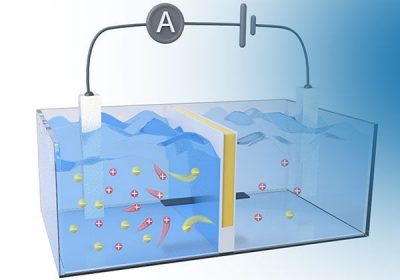Toothed whales such as sperm whales, dolphins, and porpoises make sound by forcing air through cracks in soft tissues, similar to human vocal cords. For example, they make the loud clicking sounds they use to search for food, but also the singing and whistling sounds with which they communicate with certain species. Therefore, animals have different vocal registers, just like humans.
Peter Madsen of Aarhus University and colleagues demonstrate this in an intensive study in Scienceswhere wild and dead toothed whales were examined using underwater microphones and high-speed cameras.
“It’s a heroic study. This rules out a number of theories,” says Bart de Boer of Vrije Universiteit Brussel, who studies the functioning and development of the vocal cords.
It was already known that toothed whales have intact lips (vocal lips) in the breathing tube that opens into the blowing hole. They are striped, adjacent to the soft tissues, with a gap between them.
holes
But the question was: how do they make sound? Is it passively puffed and vibrated like a human’s vocal cords, or does it move with rapid muscular movements? de Boer: The latter is less likely, but it is found in nature. Think of the buzzing of insect wings.”
To rule this out, the researchers put a high-speed camera into the blowholes of dead porpoises, which either died after being washed away or ended up in fishing nets. When blowing into the air stream from below, characteristic clicking sounds can be heard. “This rules out active muscle control,” says de Boer.
The researchers also filmed live porpoises and bottlenose dolphins in the dolphinarium in Harderwijk. Alex Tiebot, director of the dolphinarium, says, “Our animals are already trained to allow their blowholes to be checked because our veterinarians check them regularly, and they can also make sounds and clicks on demand.”
Those recordings helped make sense of the elusive clicks. They are very loud, sperm whales can reach 230 decibels, making them the loudest of all extant animals. In the depths of the deep sea, they hunt small animals by listening for their echoing echoes. “But to be able to distinguish such small animals, you need ultrasound, with frequencies up to 100,000 Hz,” says de Boer. This is more difficult at great depths, because the air is compressed to only 10 percent of its original volume.
hustle sound
By comparing the film recordings of the lips of the voice with the audio recordings, the researchers noted that clicks occur when the lips of the voice click together. These collisions produce short, high-pitched sound pulses with a broad spectrum of ultrasonic frequencies, ideal for echolocation. The sound lips are opened only for a very short time: only 40 µL of air is required for each click. “This is a very small drop,” says de Boer. “Very economical.”
With the same lip sound, toothed whales also produce singing and whistling sounds. This involves continuous vibrato, in which the vocalist’s lips are open for a much longer period of time.
Such transmission is comparable however to that between human voice recorders. Humans have a normal voice, a fake voice, and hustle sound. This is the low, grating, some might say bloody annoying, voice often associated with the speech of young, urban women. According to the researchers, the crackling heartbeat hustle sound Just like the clicks of toothed whales.
Vocal recordings in the wild indicate that most toothed whale species have three vocal registers, each with its own frequency range: one for clicking and two for singing and whistling.
A version of this article also appeared in the March 7, 2023 newspaper

“Total coffee specialist. Hardcore reader. Incurable music scholar. Web guru. Freelance troublemaker. Problem solver. Travel trailblazer.”






/s3/static.nrc.nl/images/gn4/stripped/data97693561-a990b3.jpg)
More Stories
This “salt battery” is shipped by sea
We would probably live longer if we ate less
The poorer the neighborhood, the fewer the number of vaccinations